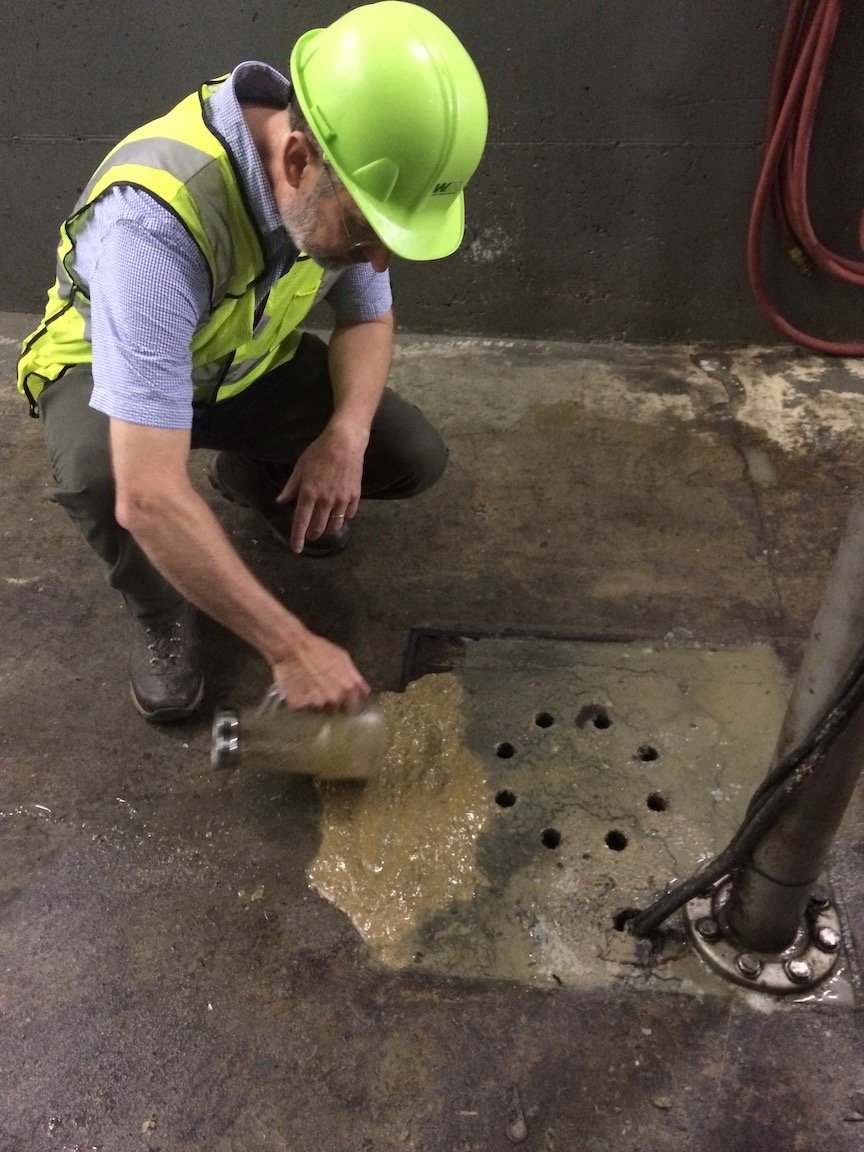State Data
Confidence in data for this state:
HIGH
2018 data unless noted.
Definitions
Terms used on this website and in data sets are defined & discussed here.
Mixing residuals for reclamation topsoil. Photo courtesy of NEBRA.
Spectacle Island in Boston Harbor was reclaimed & revegetated with biosolids compost. Photo courtesy of NEBRA.
Touring the GLSD biosolids drying facility. Photo courtesy of NEBRA.
Showing the final food waste slurry produced from Boston area food waste at a Waste Management facility in Charlestown. This slurry is co-digested at the Greater Lawrence Sanitary District, boosting renewable energy production. Photo courtesy of NEBRA.
MWRA pellets are used to fertilizer sod at a turf farm in Rhode Island. Photo courtesy of NEBRA.
Deer Island Treatment Plant, one of the largest in North America. Photo courtesy of Massachusetts Water Resources Authority.
State Statistics Dashboard
State Summary
● All 2018 data for MA reported by this National Biosolids Data Project (NBDP) are from the Mass Sludge Survey 2018, conducted by NEBRA for the MA Clean Energy Center (available free at https://files-cdn.masscec.com/NEBRA-MassCEC-MassSludgeSurvey2018-v.1.1-FINAL-30Dec2019.pdf. Look there for abundant additional information.)
● Massachusetts has a relatively small land area with dense population in its eastern half and more open space and agricultural land in its western half. Most wastewater solids are produced in the eastern part of the state, especially the Boston area, and they are managed by all three of the options: 43% incinerated, 40% applied to soils, and 17% placed in landfills (see graph, left).
● Massachusetts Department of Environmental Protection (MassDEP) regulates biosolids through NPDES permits, approvals of suitability, and beneficial use determinations.
● The Massachusetts Water Resources Authority (MWRA) serves Boston and surrounding communities, operating the Deer Island Treatment Plant (DITP) – one of the largest on the continent, treating 361.5 million gallons per day (MGD) on average in 2018. All of the solids from the DITP are anaerobically digested (AD) and heat dried into a pellet fertilizer that is used on farms around the region for growing feed corn, hay, grains, and on turfgrass on golf courses, parks, sports fields, and sod farms (which are a major industry in Rhode Island).
● The Greater Lawrence Sanitary District (GLSD) has a similar AD and heat drying biosolids program, with advanced co-digestion that processes slurried food waste, generating biogas for heat and power. It is the first and only WRRF in New England that is generating more power than it consumes – a better-than-net-zero facility.
● The other two major metropolitan areas send their solids to incineration and, to a lesser extent, landfills: Springfield trucks all solids to landfill or merchant incinerators in CT or MA, while Upper Blackstone, the Worcester area WRRF, has its own incinerator, where it burns its solids and some trucked in from other WRRFs. As of 2018, other sewage sludge incinerators (SSIs) were at Brockton and Lynn. SSIs at Fall River and Fitchburg closed several years earlier in response to stricter EPA air emissions regulations implemented in the 2010s.
● Separate preparers that treat MA solids further to create products included, in 2018, compost facilities at Ipswich (Agresource), Williamstown (Hoosac), and Marlborough (WeCare), MA, and Hawk Ridge in Unity, ME (Casella Organics). Several MA WRRFs compost just their own solids, including Dartmouth and Southbridge. Composts are marketed for $30 / cubic yard or more for use in sports fields, golf courses, landscaping, horticulture, gardens, and soil blends.
● There are several sludge storage lagoons in the state that remove their solids only every 10-30 years; Salisbury has one, but they removed no solids from it in 2018.
● Pressures on biosolids management identified by the state biosolids coordinator are:
Environmental issues related to PFAS (per- and polyfluorinated alkyl substances), a family of chemicals of expanding concern; as of 2021, MassDEP has imposed some of the strictest PFAS drinking water and groundwater standards in the world and is requiring testing of biosolids for PFAS;
Environmental issues related to nutrients – the state agriculture department regulates fertilizers that contain phosphorus, including biosolids products;
Rising costs generally – regulatory requirements, population growth, and mitigation and adaptation related to climate change are creating added costs for WRRFs and their municipalities and ratepayers; and uncertainties around PFAS have caused prices for solids management to increase by as much as double in the early 2020s.
● Biosolids management in New England is supported by the MA-based New England Water Environment Association (NEWEA) and its residuals committee and the North East Biosolids and Residuals Association (NEBRA), which led this NBDP project.








